Colorized Photos of the Discovery of King Tut’s Tomb
![]()
Photo colorizer Jordan Lloyd of Dynamichrome was recently commissioned to digitally color reconstructed photos of the discovery and exploration of Tutankhaten’s tomb starting in 1922.
The photo above was taken just as King Tut’s coffin lid was taken off. Tutankhamun is seen lying intact with a 24-pound burial mask made of solid gold. Here are other before-and-after photos in the series:
December 1922: The Antechamber
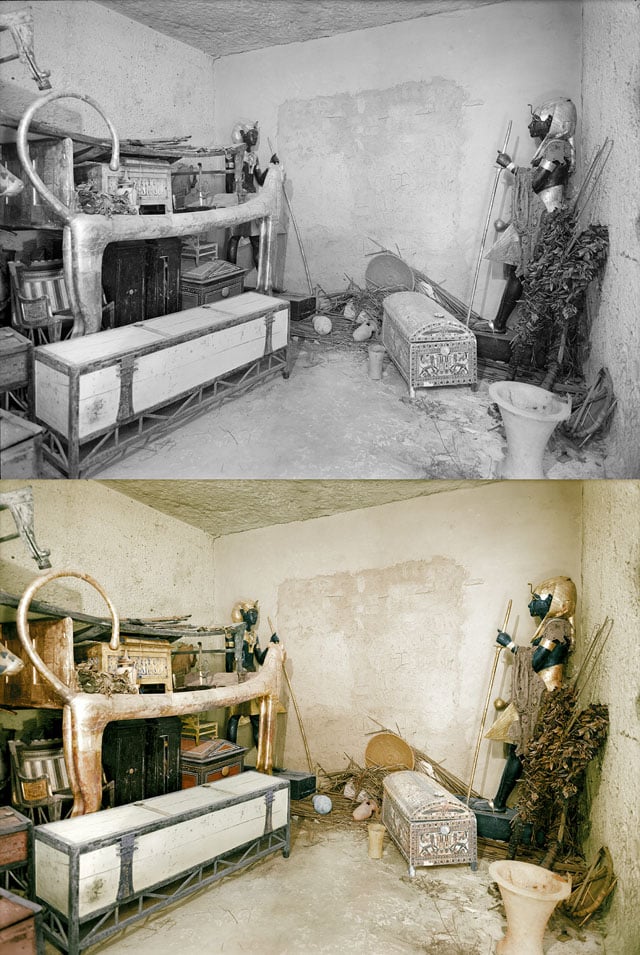
December 1922: The Antechamber
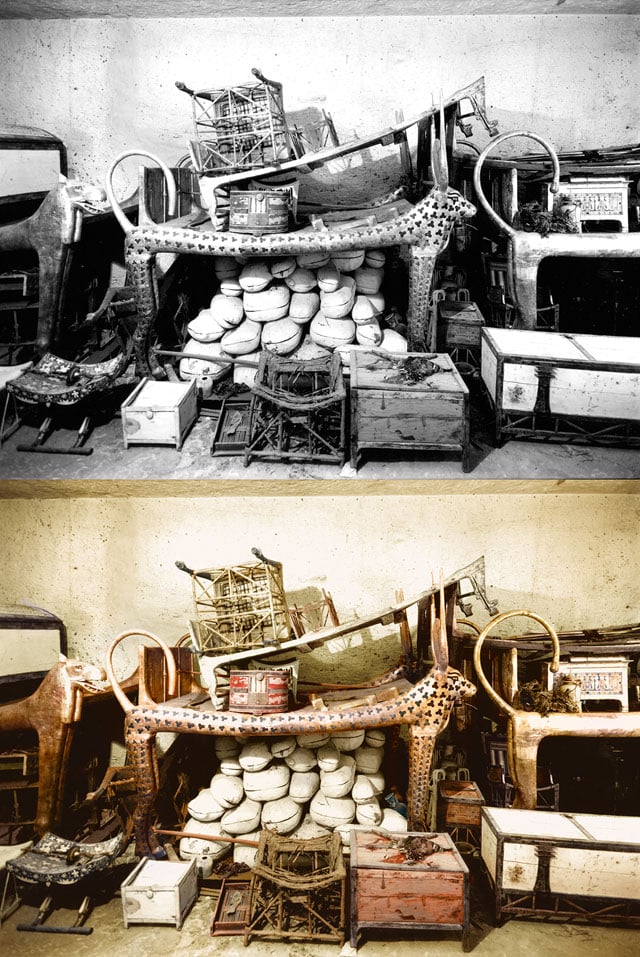
December 1922: The Antechamber
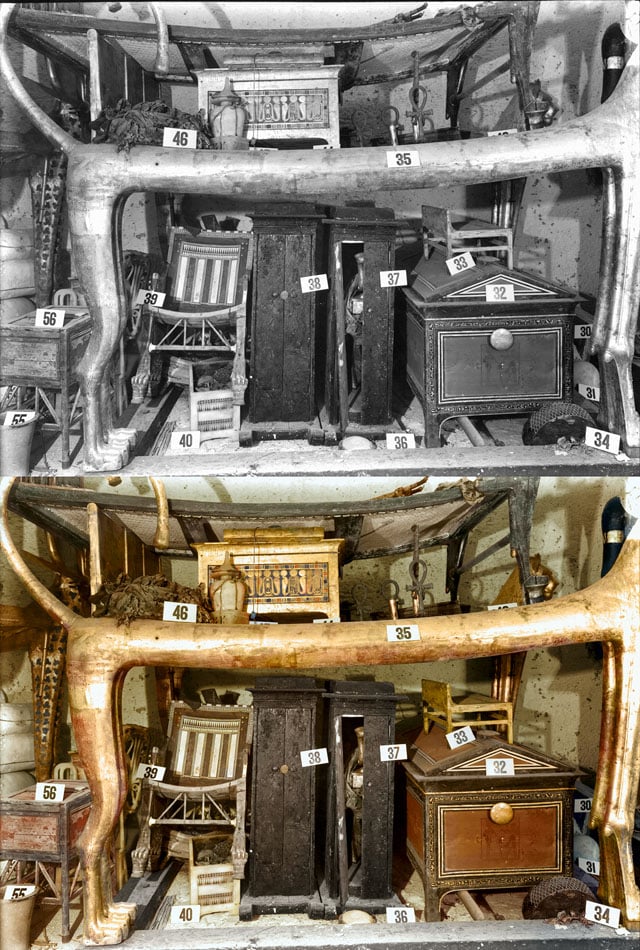
December 1922: The Antechamber
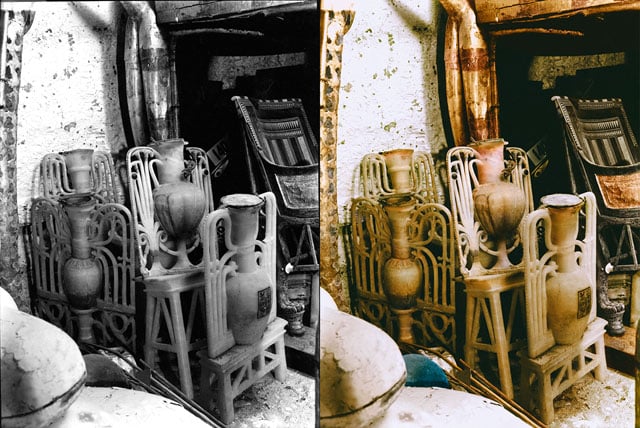
December 1922: The Antechamber
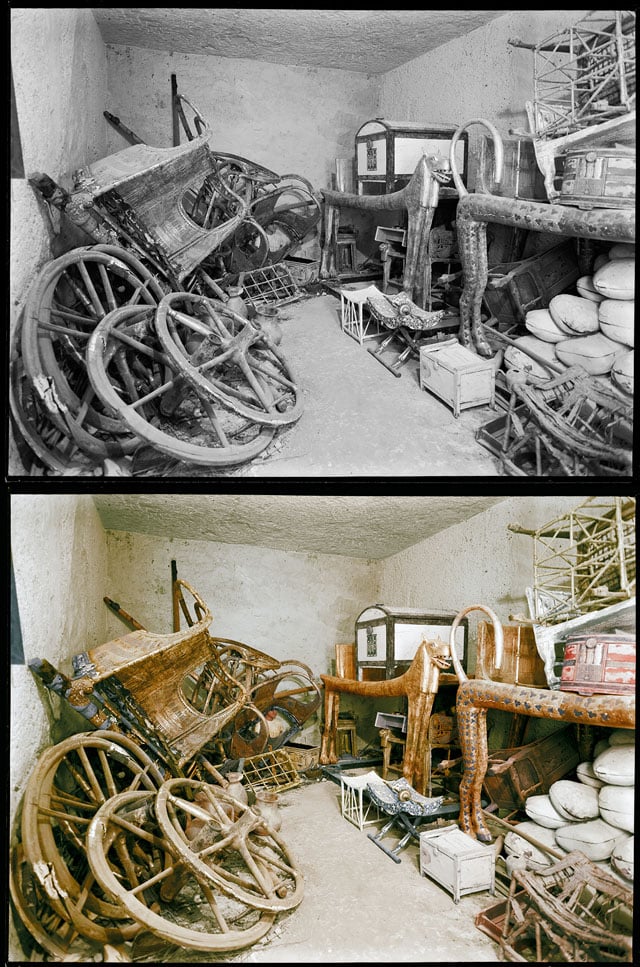
c. 1923
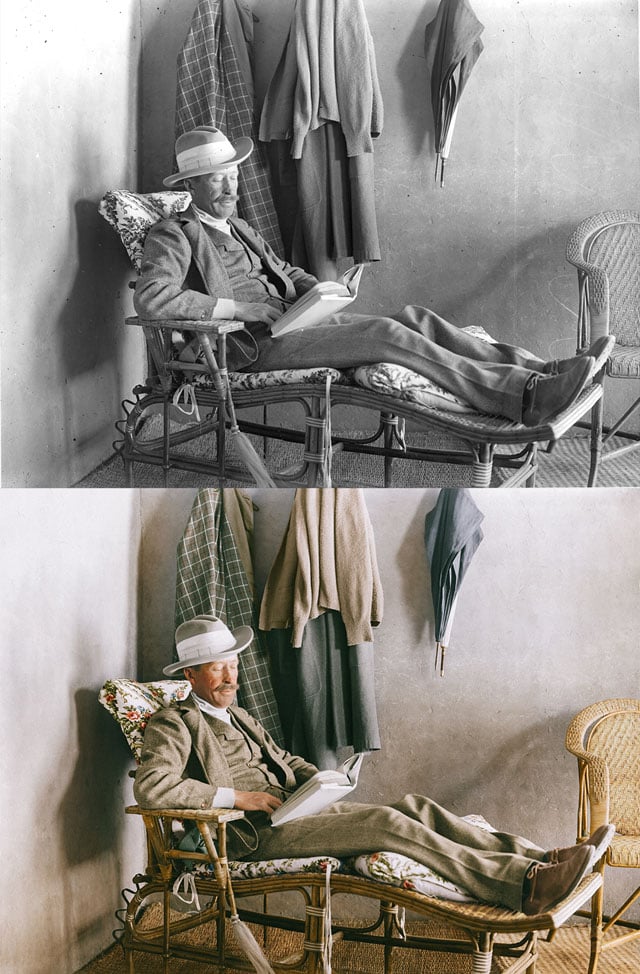
c.1923: The Treasury
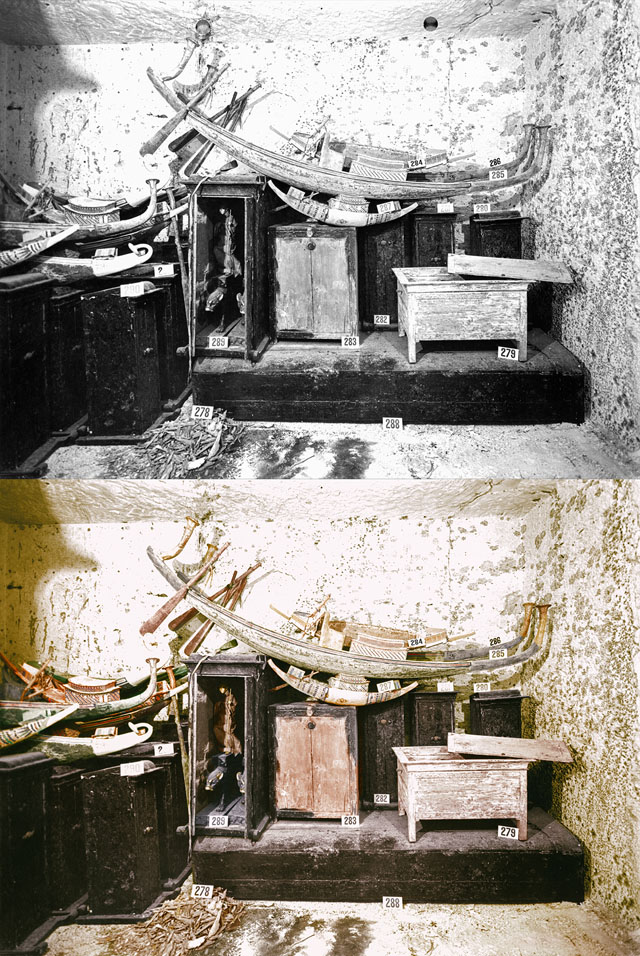
November 29, 1923
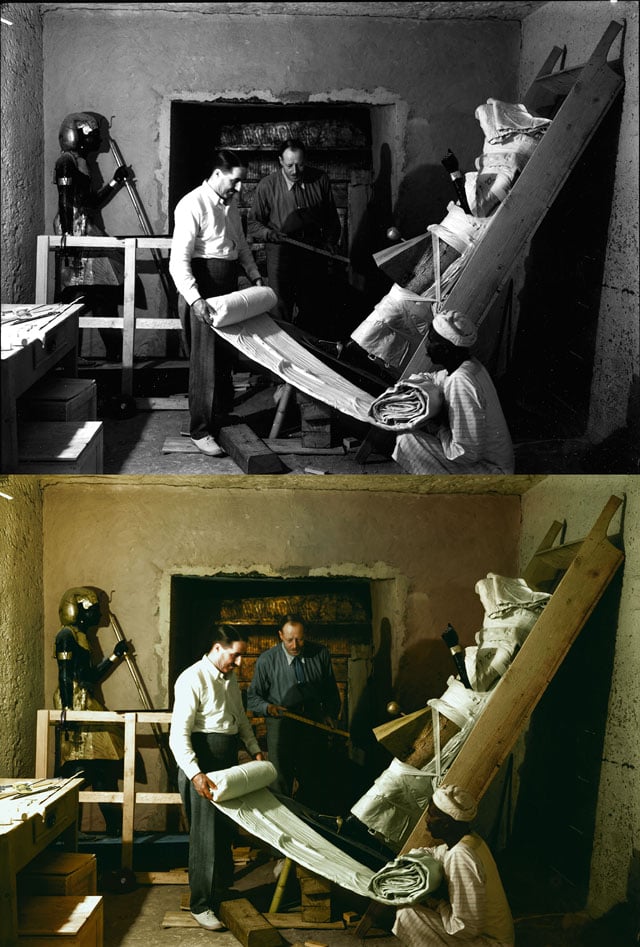
December 1923
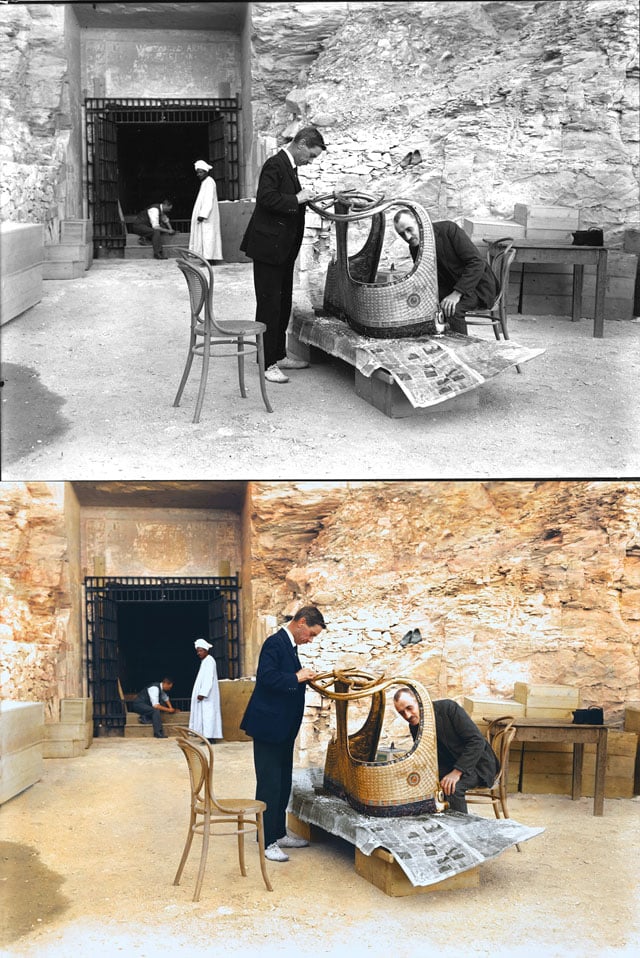
c.1923: The Treasury
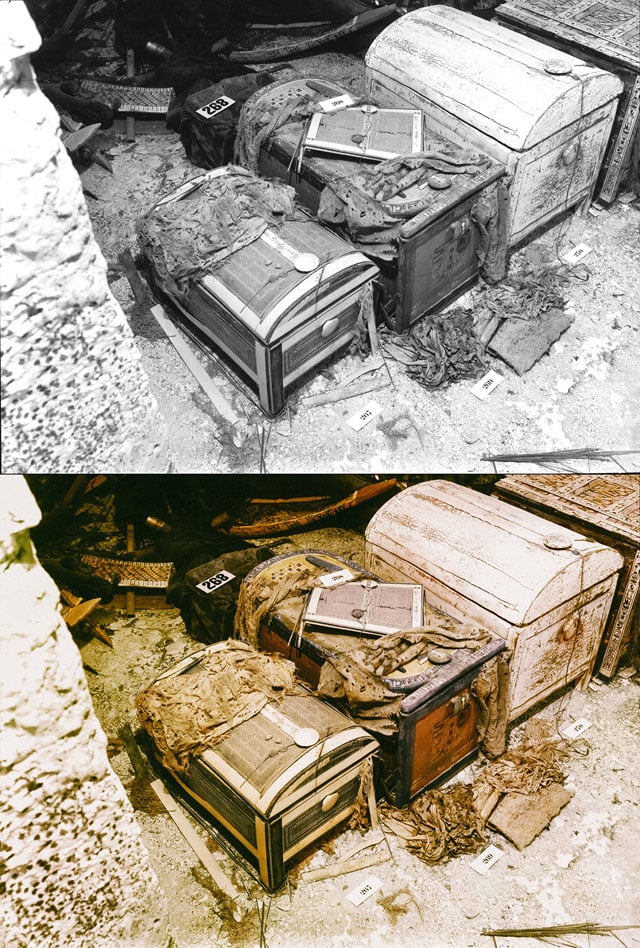
c.1923: The Treasury
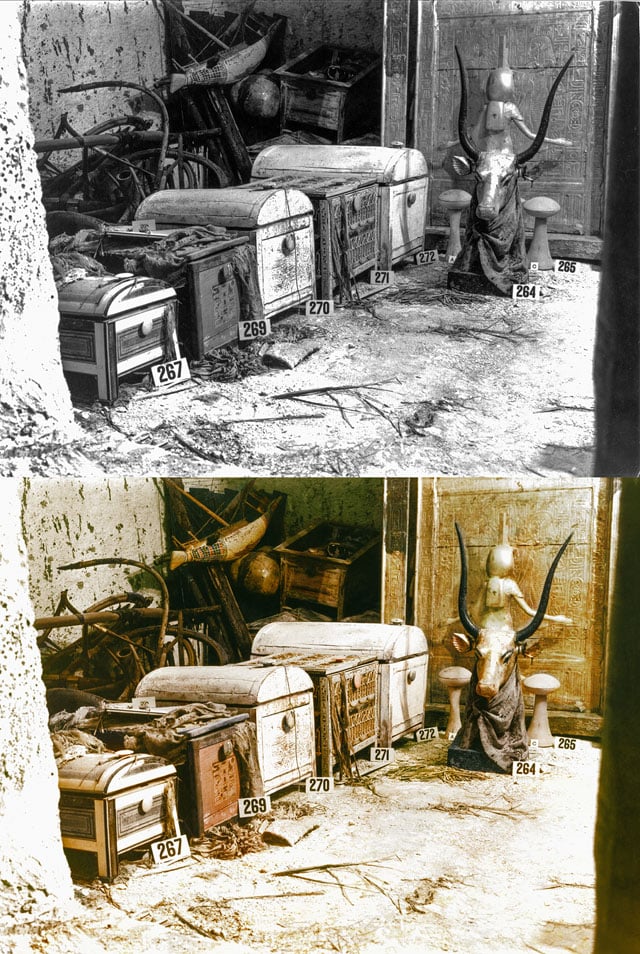
c.1923: The Treasury
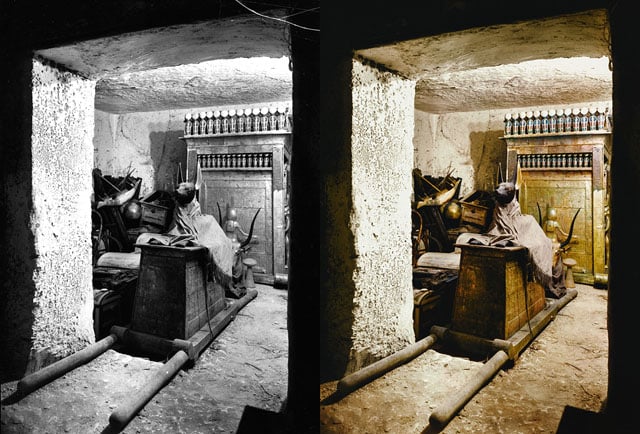
c.1924(?)
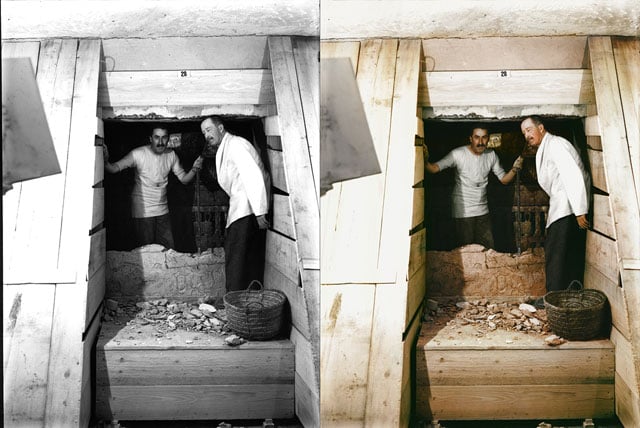
December 2, 1923: The Burial Chamber
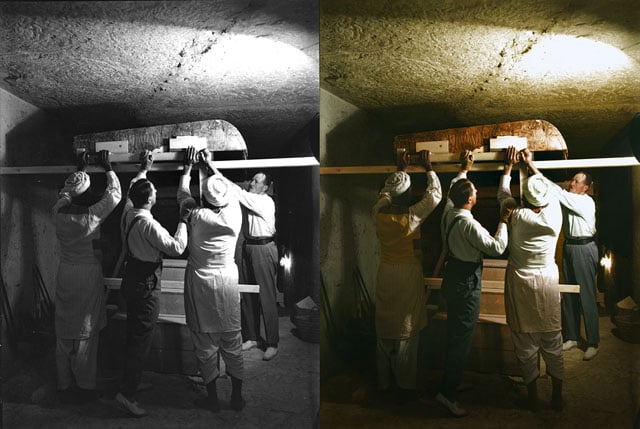
December 1923: The Burial Chamber
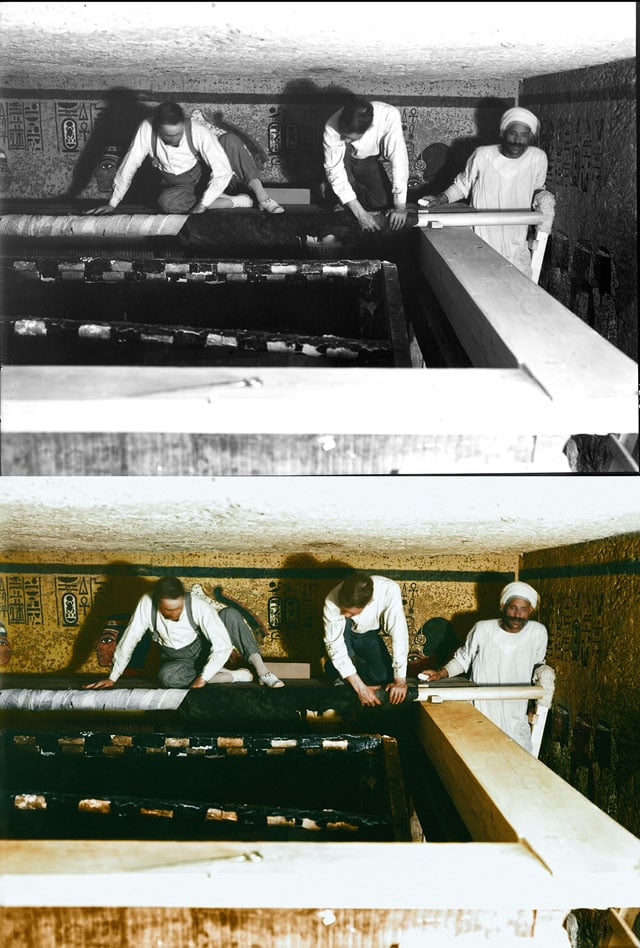
December 1923: The Burial Chamber
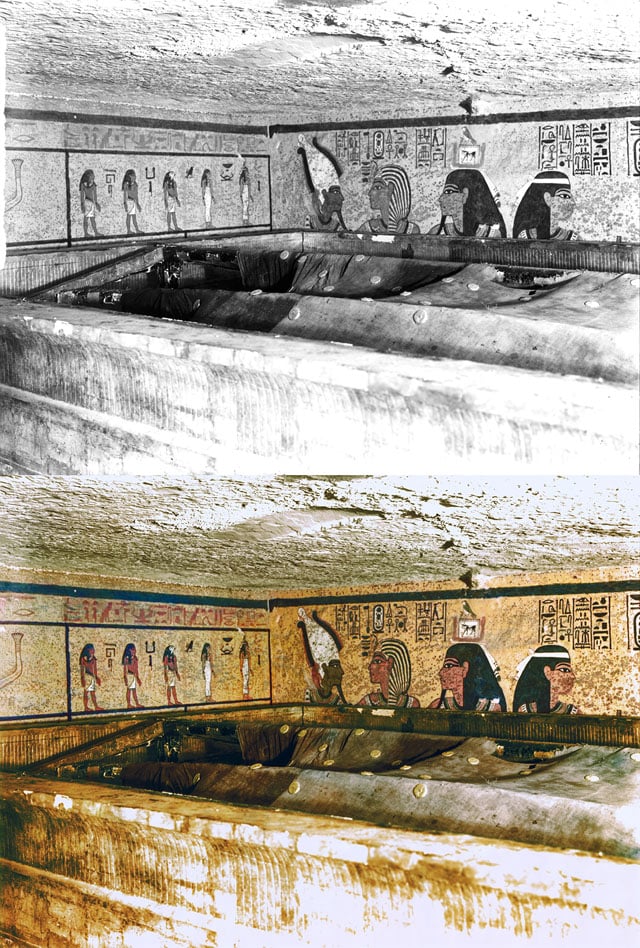
January 1924
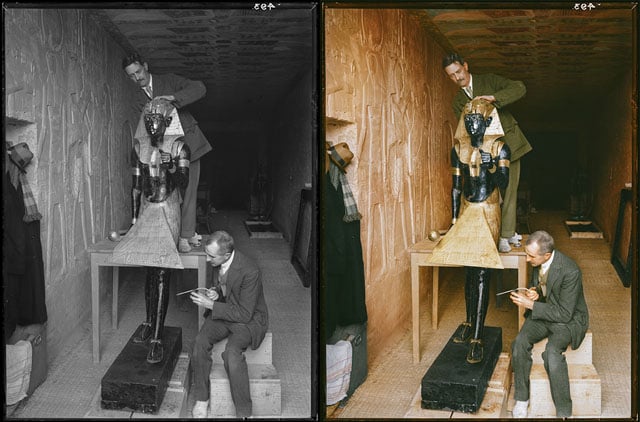
January 4, 1924
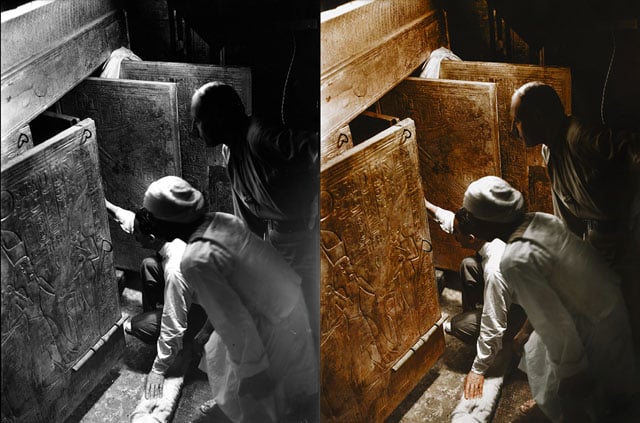
October 1925
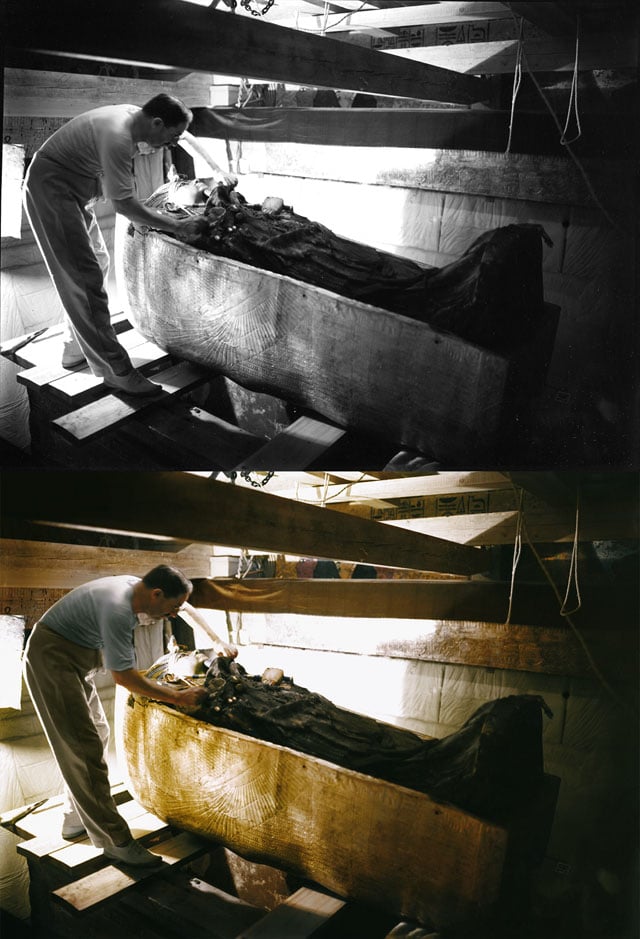
October 1925
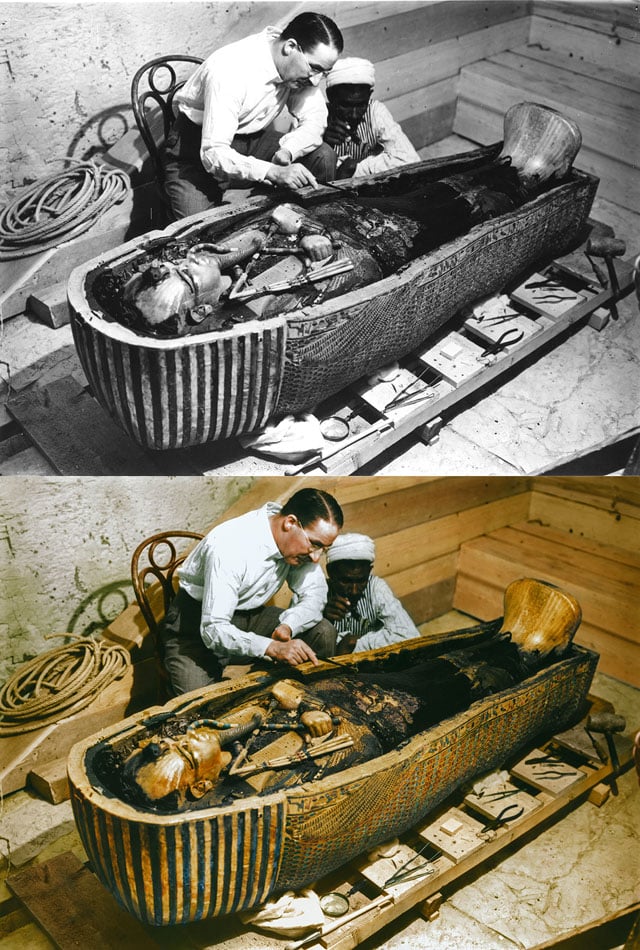
The original black-and-white photos in this project were captured by Egyptologist Harry Burton, and the colorization was done with the Griffith Institute in Oxford and SC Exhibitions based in Germany for their upcoming exhibition “The Discovery of King Tut,” which opens on November 21st on 5th Avenue in New York.
P.S. Last year, we featured a behind-the-scenes look at Lloyd’s colorization work. You can also find more on his website, Instagram, and Twitter.
Image credits: All images by Harry Burton. ©The Griffith Institute, Oxford. Colorized by Dynamichrome for the exhibition “The Discovery of King Tut” on New York’s 5th Avenue on November 21st, 2015 in conjunction with SC Exhibitions.